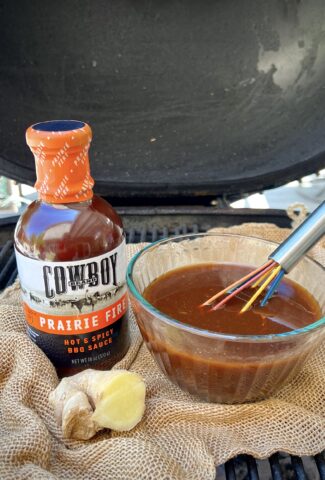
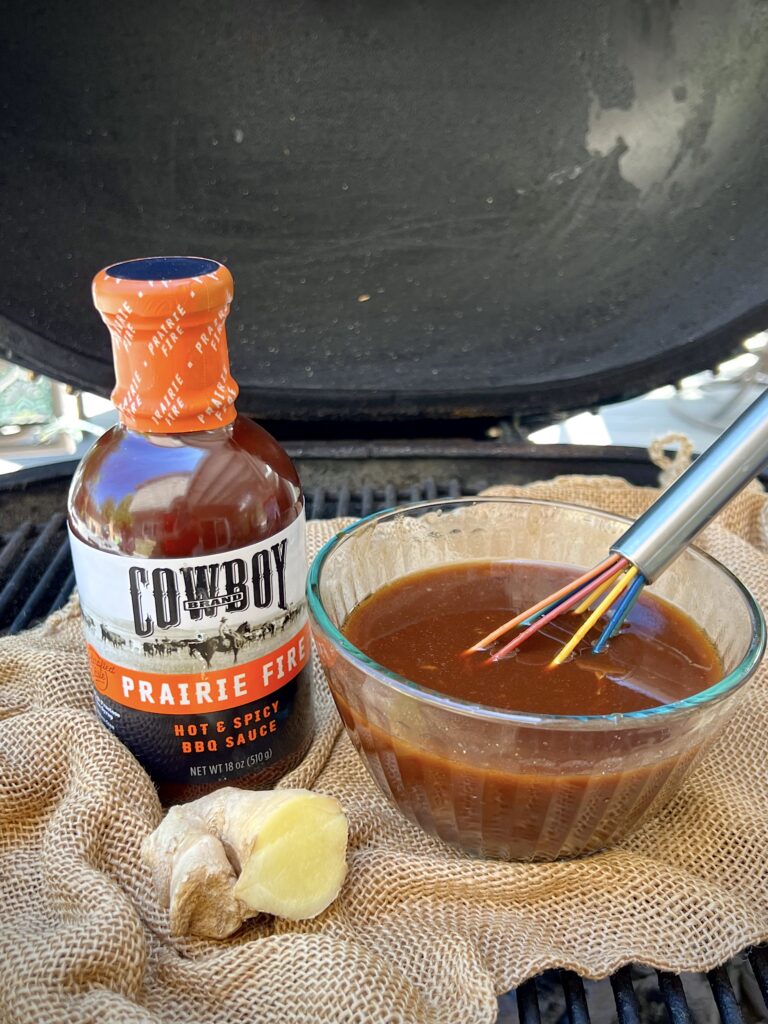
I love Korean BBQ Sauce! The sweet, savory, and slightly spicy flavors are so delicious. I’ve been wanting to make my own Korean BBQ Sauce at home after all I love to play with flavors in the kitchen! However I do love a short-cut, and that’s exactly why I reached for a bottle of Cowboy Brand BBQ Sauce. Cowboy’s Prairie Fire BBQ Sauce made a flavorful base.
Thank you to Cowboy Brand Charcoal for this post because Cowboy Korean BBQ Sauce is off-the-charts delicious. And it is so versatile!

How about you? Do you love Korean BBQ and whisking up yummy concoctions? Follow along, I believe my Korean-style sauce will be a great addition to your line-up of BBQ Sauces.
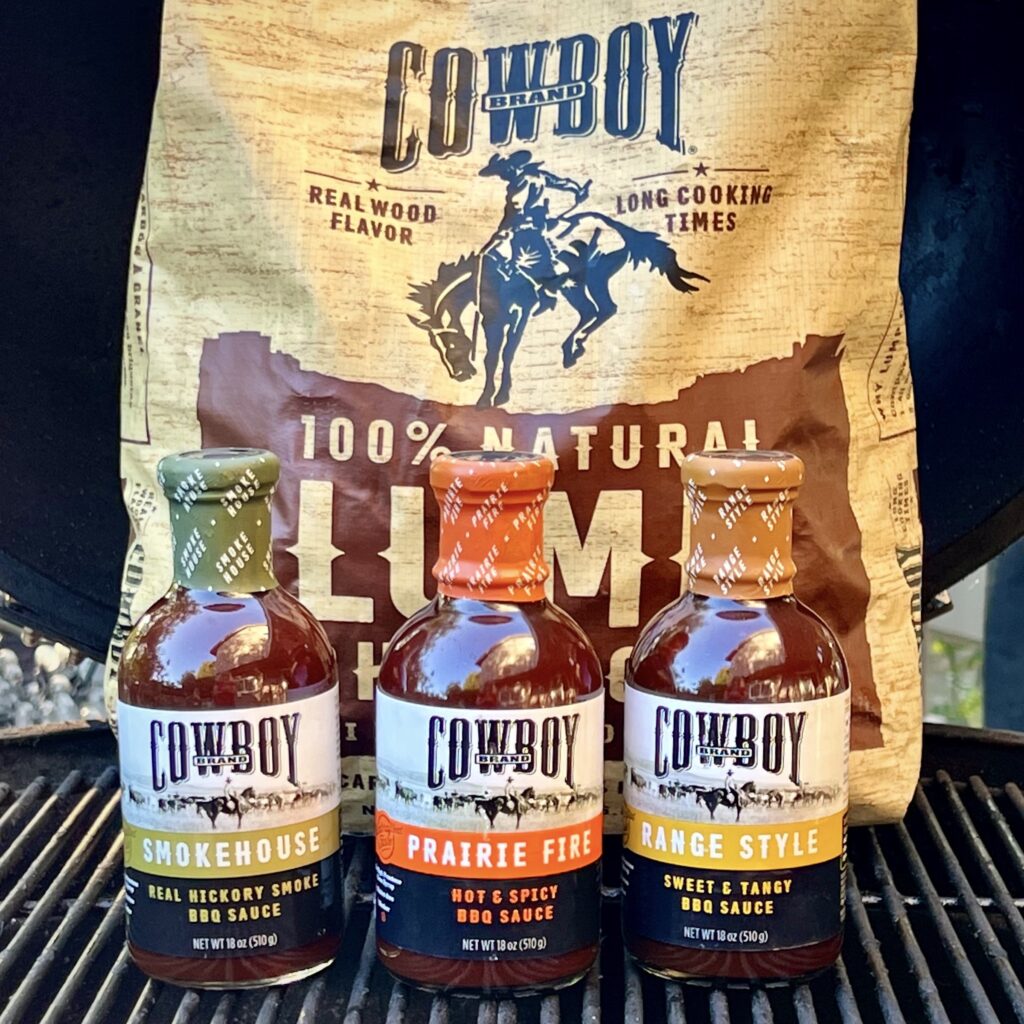
FIND THE RIGHT BASE FOR COWBOY KOREAN BBQ SAUCE
One day I was thinking let’s turn a Cowboy Brand BBQ Sauce into a Korean BBQ Sauce! Because, why not? I researched the definition of Korean BBQ along with the specific ingredients. Then I opened the pantry, and reached for 3 different flavors of Cowboy Brand BBQ Sauces.
1. Cowboy Range Style BBQ Sauce
I start by trying Cowboy Range Style BBQ Sauce. It has just enough sweetness to compliment the tangy kick. I enjoy the flavor, and I could definitely turn it into a Korean BBQ Sauce with just a few added ingredients.
Cowboy Range Style Sweet & Tangy BBQ Sauce pairs well with beef, pork, and poultry! For example, how about a Sweet and Tangy BBQ Pork Sandwich?
In addition, not only is the flavor of Cowboy Range BBQ Sauce versatile, it has no high fructose corn syrup, and is gluten-free and kosher just like Cowboy Smokehouse and Prairie Range BBQ Sauce.
Every palate finds this sauce a tasty basic BBQ Sauce. However, for Korean BBQ Sauce I want the base to be savory and spicy. So I reach for the next sauce.
2. Cowboy® Smokehouse BBQ Sauce
I enjoy Cowboy Smokehouse BBQ Sauce when I want a pronounced smoky flavor! It’s so delicious for smoked brisket. I enjoy the aromatic wood fire smoked BBQ sauce when making baked beans. What a flavor boost!
Perhaps the smoky flavor is reminiscent of cooking over open fires while camping. Brush Cowboy Smokehouse BBQ Sauce on beef or pork burgers and watch the campers come running! However, for my sauce, I thought the smokiness while delish might overpower the Hoisin and the ginger. Onward to the next BBQ Sauce.
3. Cowboy® Prairie Fire BBQ Sauce
The Cowboy Brand site describes this sauce perfectly, “This sauce kicks it up a notch with a fiery mix of bold peppers & spice while maintaining just a touch of subtle sweetness to stoke up the best flavors in your grilled foods”.
Cowboy® Prairie Fire BBQ Sauce is a bit spicier than Cowboy Range Style BBQ Sauce, but it also has more umami flavor. I thought it would be a good base for a Korean influenced BBQ sauce.
In my opinion, spicy-heat sensitive palates will fine it a bit too spicy. In this case, the spiciness is needed for my Korean BBQ Sauce! Immediately, I knew I could taper down the heat level with Hoisin and rice vinegar. The base flavor of Cowboy Prairie Fire BBQ Sauce is absolutely perfect for my mission.

IS KOREAN THE SAME AS ASIAN BBQ SAUCE?
Korean BBQ Sauce and Asian BBQ sauce are not the same thing. They have some similarities, but there are also some differences. Here is what I discovered:
Korean sauce typically contains gochujang, a Korean chili paste that gives it a spicy, umami flavor. Similarly Cowboy Prairie Fire BBQ Sauce has spicy heat, so yay! I won’t be needing to use Gochujang because Cowboy Brand did the work for me…plus I don’t love Gochujang!
Asian BBQ sauce is a more general term that can refer to variety of sauces from different Asian cuisines. Some common ingredients in Asian BBQ sauce include soy sauce, ginger, garlic, sesame oil, chile garlic sauce, and honey.
Asian BBQ sauce contains oyster sauce and fish sauce while Korean BBQ can contain Asian apple or other fruit. However, the main difference in Korean versus the general term,Asian BBQ Sauce, is addition of gochujang in Korean BBQ Sauce. So hey, if you love the red fermented red chili peppers, rice and soybean mixture go for it. It does have a spicy, umami flavor that is unique to Korean cuisine.

DIFFERENCE BETWEEN KOREAN AND AMERICAN BBQ SAUCE
There are similarities to Korean and American BBQ Sauce. In short, American-style BBQ sauce is tomato-based while soy sauce, ginger, garlic, and rice vinegar are the primary ingredients in this Korean-style BBQ sauce. Both sauces are delicious with a balance of acidity, umami, saltiness and sweetness.
Korean Sauces contain soy sauce, ginger, garlic, and rice vinegar. So that’s exactly what I added to turn Cowboy Prairie Fire BBQ Sauce.
Cowboy Prairie Fire BBQ Sauce ingredients include with molasses, Worcestershire sauce, and vinegar. In the relationship to those ingredients, I knew that hoisin, soy, and rice vinegar create the same umami.
Another fun discovery is to see that Cowboy’s BBQ Sauce contains tamarind, a welcomed ingredient in Southeast Asian cooking.
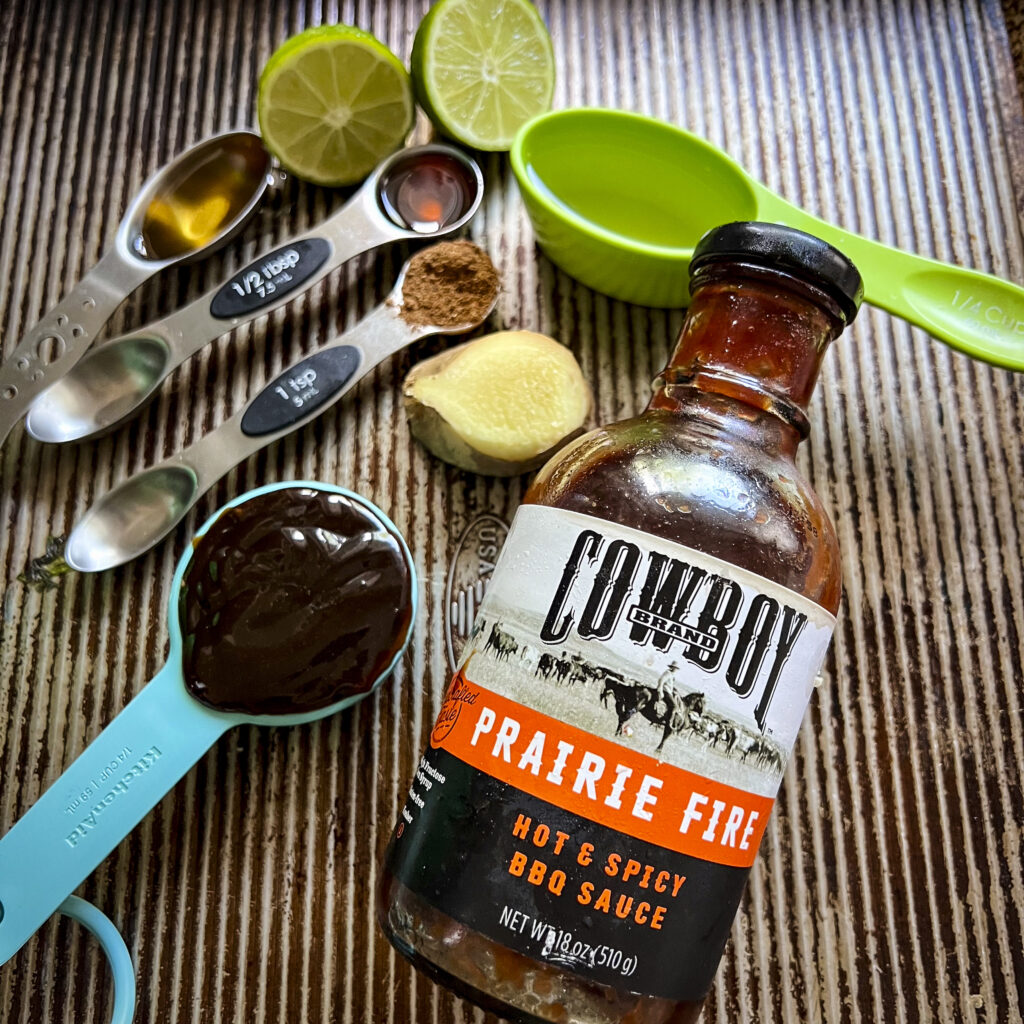
INGREDIENTS YOU’LL NEED
Cowboy Prairie Fire BBQ Sauce: Truly, I found this BBQ Sauce to be the star! However if you want to use Cowboy Range Style, feel free too especially if you want to make the sauce less spicy.
Unseasoned rice vinegar: This adds acidity and helps to balance out the sweetness of the sauce. Be sure to buy “unseasoned rice vinegar instead of “seasoned rice vinegar”, the latter has salt in it.
Hoisin Sauce: This adds umami flavor just like soy sauce does.
Freshly grated ginger: This adds freshness and heat. Once peeled, I finely grate it just like cheese. Try not to use chopped ginger from a jar. Fresh is best!
Agave Syrup: My favorite way to add a hint of sweetness without the flavor of honey. Yes, you can use honey instead of agave syrup. Particularly in this recipe, I would choose Orange Blossom Honey!

OPTIONAL INGREDIENTS:
Chinese 5-spice: This adds a hint of anise flavor and makes a palate wonder what is that unique flavor! If you do not have make your own you can omit it, honest, the sauce is even delish without. On the other hand, you can make your own spice blend by simply googling “5-spice recipe”. In general, Chinese 5-spice is made with star anise, cloves, cinnamon, Sichuan peppercorns and fennel or anise seeds.
Toasted Sesame Seed Oil: This adds that hint of Korean flavor and nuttiness. Go easy though, toasted sesame seed oil is strong. If you don’t have sesame seed oil simply omit it.
Lime Juice: A fresh splash of acid is always needed in savory dishes! It brings balance by adding acidity. If you don’t have fresh lime juice use a lemon. If your house has no citrus taste the sauce then decide if you love it as is or add a splash of rice vinegar or distilled white vinegar.


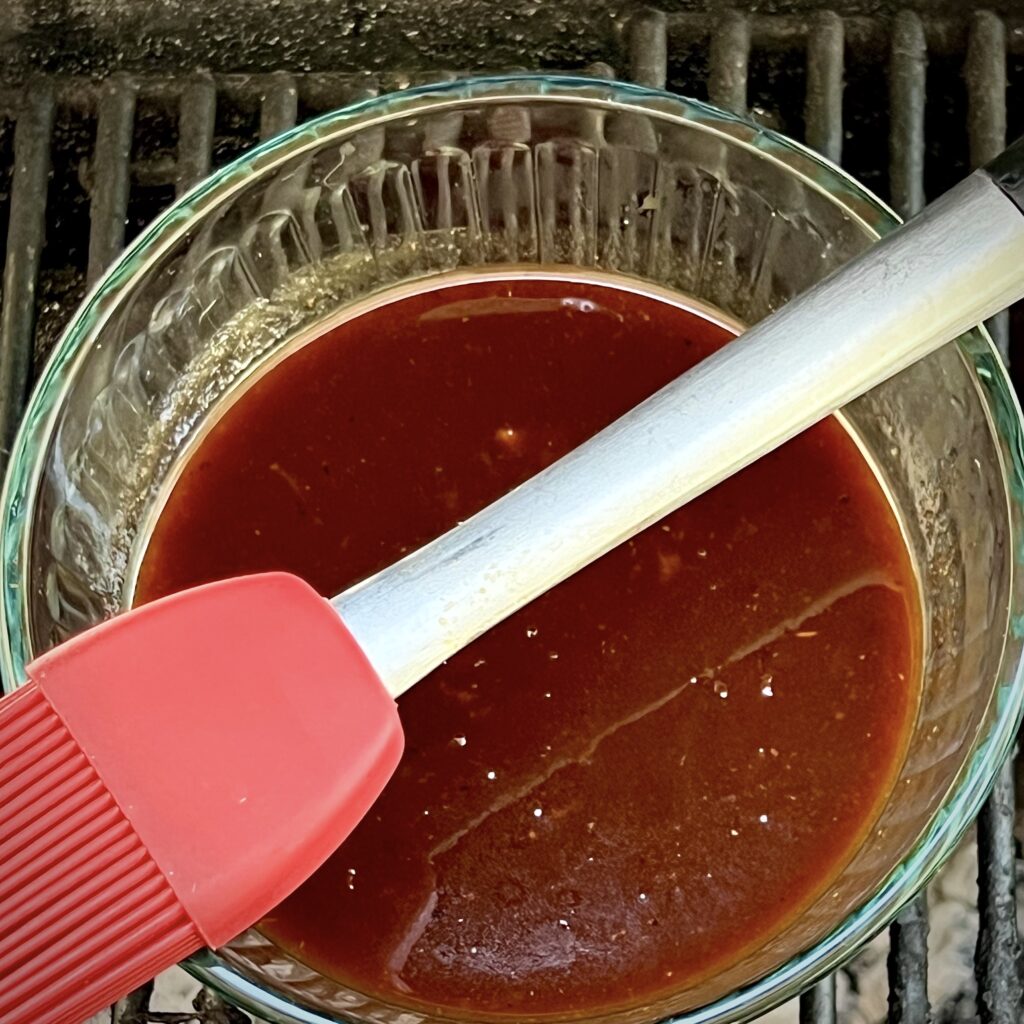
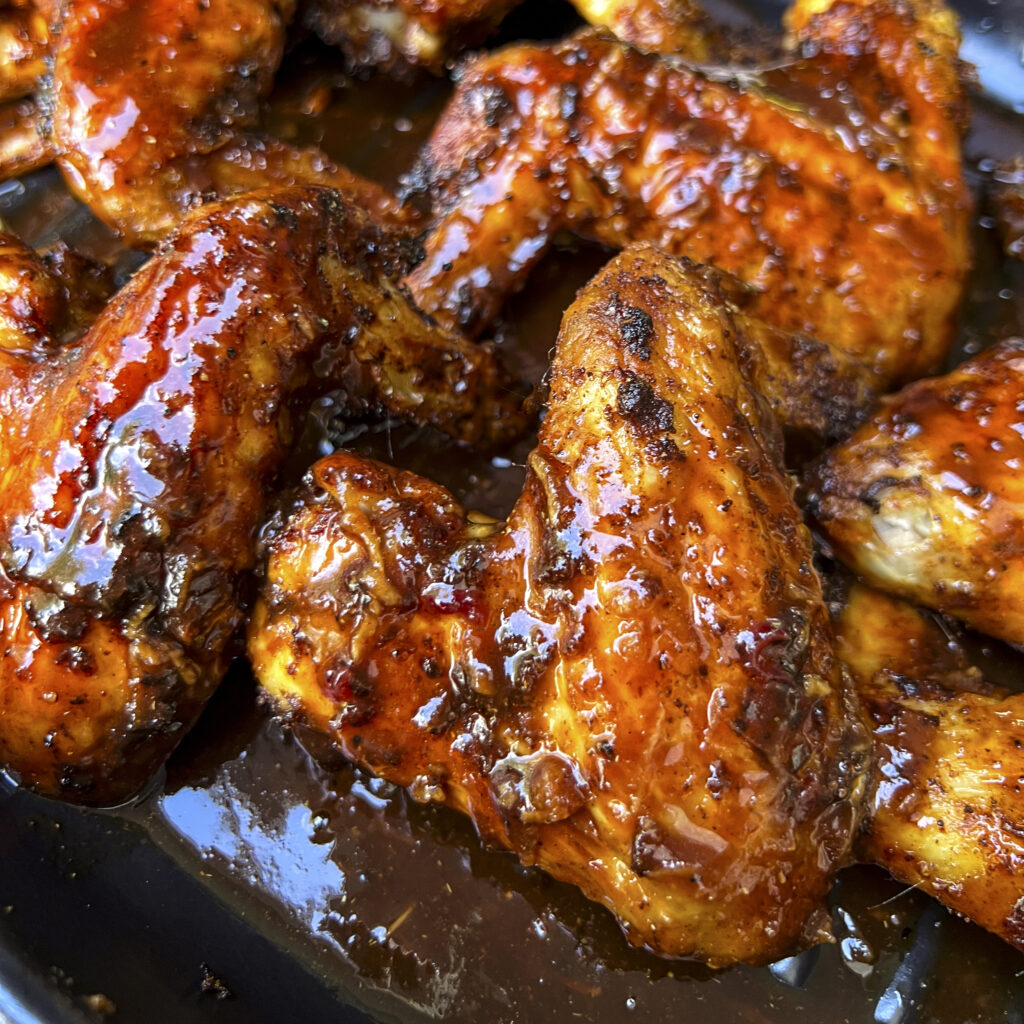
HOW TO TURN COWBOY BBQ SAUCE INTO KOREAN SAUCE
This is the easiest recipe ever! Whisk all of the ingredients together until they are well combined. Done!
If you feel the sauce is a bit thin for what you are using it for then cook it in a saucepan over medium heat until it thickened slightly. I brought it to a boil, then simmered the sauce for 5 minutes on medium-low.
However, the first time I made the sauce, I did not heat it. Using the Korean BBQ Sauce to glaze chicken wings, I knew the sauce would be heated on the wings; so delicious! The sauce was sweet, savory, and slightly spicy, and it really enhanced the flavor of the chicken.
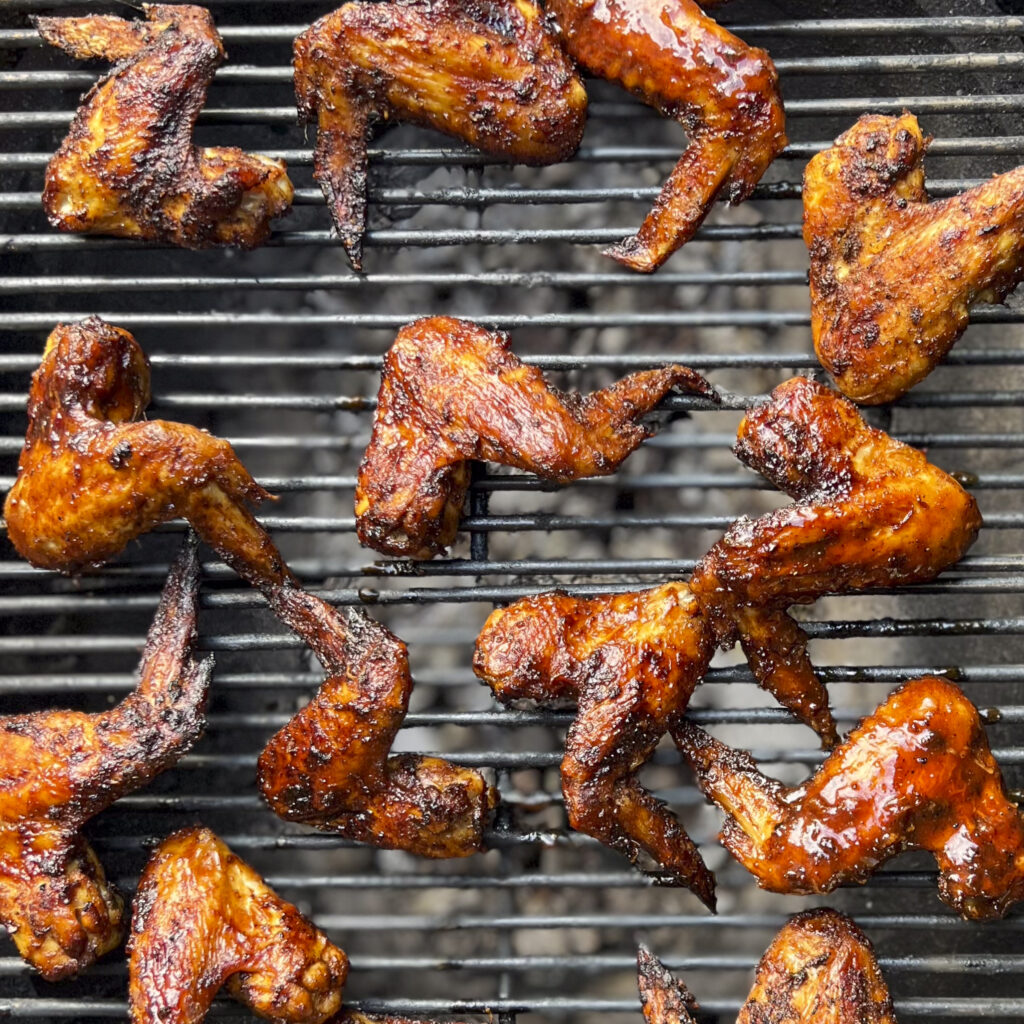

WHAT DISHES CAN KOREAN BBQ SAUCE BE USED FOR?
Cowboy Korean BBQ Sauce is scrumptious on a variety of dishes, such as chicken, pork, beef, lamb, or tofu. It would also be good as a dipping sauce for dumplings, spring rolls, egg rolls or kebabs.
In other words, almost any protein, even a halibut or swordfish steak will be delicious with this sauce.
Furthermore this umami BBQ sauce is delicious on roasted or grilled veggies such as broccoli, cauliflower, Brussel sprouts, and carrots. I love the sauce on sautéed onions, fennel, and leeks as well!
Lastly, give the sauce a try with white rice, Asian noodles, or any grain you choose.
Use Korean BBQ as a marinade! When using it as a marinade whisk the first 4 ingredients, Prairie Fire Sauce, Rice Vinegar, Hoisin Sauce, and agave, and you are done! Marinade your meat up to 1-hour.
IN CONCLUSION
Cowboy Brand BBQ Sauces are delicious on their own but I love to change things up. So I grabbed a bottle of Cowboy Prairie Fire BBQ Sauce, and whisked in a few Korean. The result was a a delicious Cowboy Korean BBQ Sauce that you definitely must try. So fun and so flavorful. Let me know how you use the sauce!
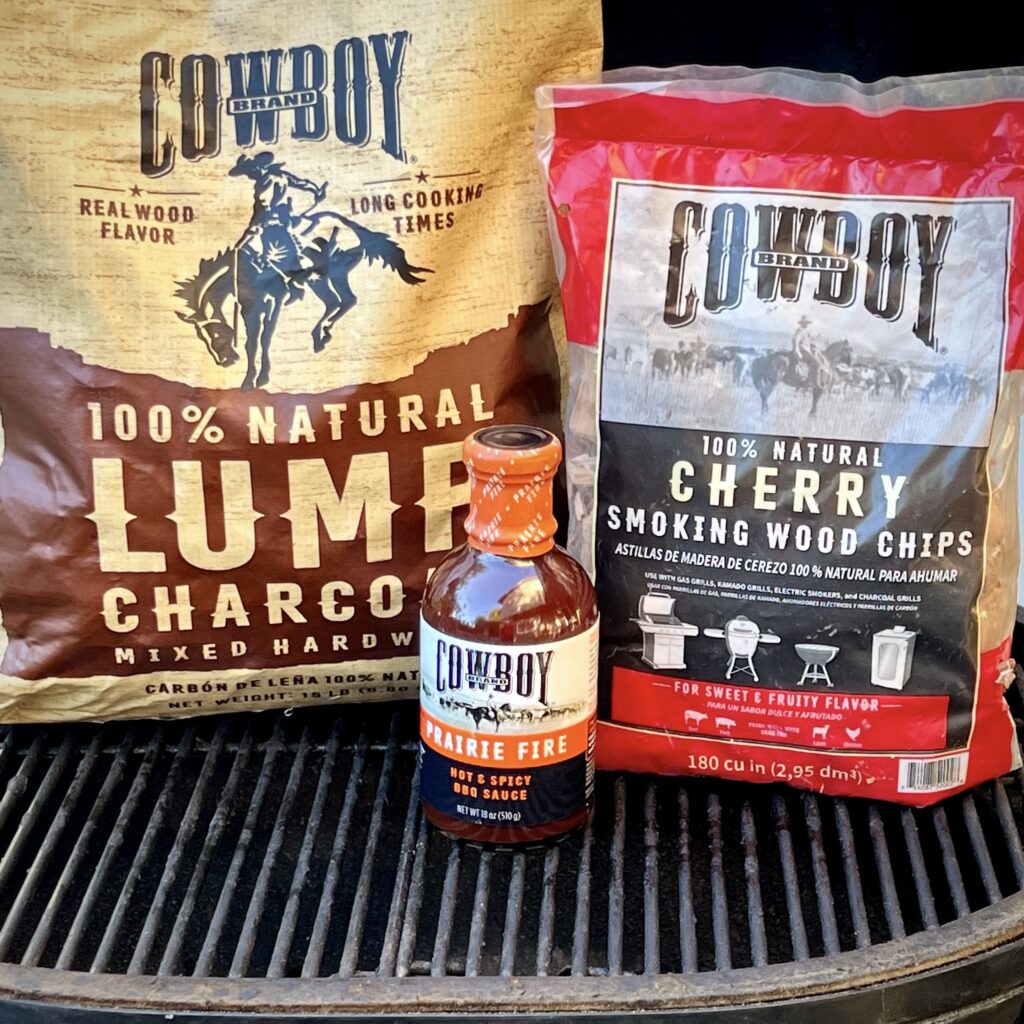
CHECK OUT MORE COWBOY CHARCOAL RECIPES
In the mood for a Hawaiian Recipe? Check out an incredible Smoked Hawaiian Rice with Pineapple and Pork!
Cowboy Charcoal has a plethora of RECIPES!
Follow Cowboy Charcoal on Instagram!
I love Cowboy Charcoal You Tube Channel!
Cowboy Korean BBQ Sauce
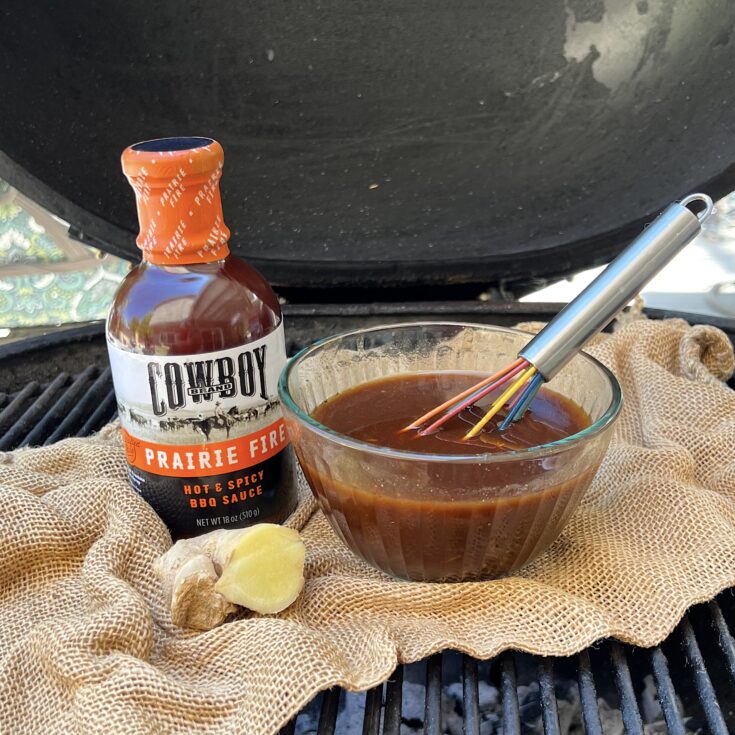
Cowboy® Prairie Fire BBQ Sauce is transformed into a tantilizing Korean BBQ Sauce with the simple addition of hoisin, rice vinegar, ginger, and lime juice. A sauce perfect for chicken, pork, beef, fish, noodles, rice and appetizers.
Ingredients
- Ingredients:
- 1/2 cup Cowboy Prairie Fire BBQ Sauce
- 1/2 cup unseasoned rice vinegar
- 1/2 cup hoisin sauce
- 1 1/2 inch knob of ginger, peeled and grated
- 1 tablespoon agave syrup
- 1 teaspoon Chinese 5-spice
- 2 tablespoons fresh lime juice
- 1/2 tablespoon toasted sesame seed oil
Instructions
- In a medium bowl, whisk together all of the ingredients.
- If desired, cook the sauce in a saucepan over medium heat until it thickens slightly, about 5 minutes.
- For grilled meat, brush the sauce on during the last 5 minutes of cooking.
- Use the sauce as a marinade, glaze for grilled meat, or a dipping sauce.
Notes
- If a fresh ginger substitute is needed, add 1 teaspoon of ground ginger.
- When grilling meat, brush the Korean BBQ Sauce during the last 5 minutes of the cook to prevent burning.
- To decrease the spiciness in the sauce use Cowboy® Range Style BBQ Sauce.
- To increase the spiciness in the sauce add sriracha style hot sauce or Gochujang.
- This sauce is delicious over white rice!
- If Chinese 5-spice or toasted sesame seed oil is not available simply omit. The sauce taste fabulous without!
Leave a Reply